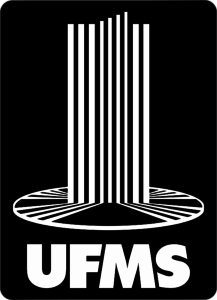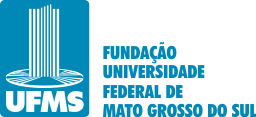Use este identificador para citar ou linkar para este item:
https://repositorio.ufms.br/handle/123456789/1992| Tipo: | Dissertação |
| Título: | Identificação por marcas naturais e estimativa de parâmetros populacionais de Phyllomedusa azurea (Anura, Hylidae) em uma área de Cerrado |
| Autor(es): | Rocha, Sabine Borges da |
| Primeiro orientador: | Sabino, José |
| Abstract: | Estudos populacionais permitem a obtenção de diversas informações biológicas aplicáveis à conservação da vida silvestre. Há diversos tipos de marcações individuais que podem ser utilizadas nesses estudos. Contudo, a única não invasiva para individualização de anfíbios é a identificação por marcas naturais. Uma das formas de registrar as marcas naturais é por imagem fotográfica. Assim, este trabalho teve como objetivo: (1) verificar se as marcas naturais presentes nos flancos de Phyllomedusa azurea podem ser utilizadas para distinguir os indivíduos; (2) analisar a estabilidade temporal das marcas naturais dos flancos de P. azurea, de modo a validar o método de identificação fotográfica; (3) quantificar os parâmetros populacionais sobrevivência aparente e probabilidade de captura de P. azurea ao longo de um período reprodutivo da espécie, no Município de Bonito, Mato Grosso do Sul. Indivíduos adultos de P. azurea (n = 15) foram capturados entre outubro 2012 e janeiro 2013, em lagoas temporárias no Município de Bonito, e mantidos em cativeiro. Capturamos imagens dos flancos dos indivíduos semanalmente, durante nove semanas em busca de alterações temporais no padrão de manchas. Verificamos que as marcas naturais dos flancos de P. azurea são únicas para cada indivíduo da espécie e que o formato destas manchas permaneceu constante ao longo de nove semanas. Os dados de marcação e recaptura foram obtidos entre outubro 2012 e março 2013. O método de amostragem utilizado foi o de busca ativa visual no período noturno em duas lagoas temporárias. Individualizamos os animais por meio de fotografia de seus flancos, nos quais se encontram as marcas naturais. Nas duas lagoas, individualizamos 177 indivíduos de P. azurea (29 fêmeas e 148 machos). Recapturamos somente machos (n = 20). A sobrevivência aparente dos indivíduos machos variou entre as duas lagoas amostradas, sendo 23% na lagoa 1 e 41% na lagoa 2. A probabilidade de captura dos machos variou entre as lagoas, bem como ao longo dos meses, em média 39% para os indivíduos da lagoa 1 e 52% para os da lagoa 2. Verificamos que a identificação por meio das marcas naturais, com registro fotográfico, é uma forma de individualização eficiente para estudos com P. azurea na região estudada. Sugerimos que futuros estudos populacionais sejam desenvolvidos com a espécie, em um maior escala temporal (ao longo dos anos) e espacial (de paisagem). ABSTRACT - Studies of populations allow the obtaining of many biological information that are applicable to the conservation of wildlife. There are many types of individual marks that can be used in these studies. Even though, the only non-invasive to the individualization of amphibian is the identification through natural marks. One of the ways of registering the natural marks is with photographic image. This work has the objectives of: (1) verifying if the natural marks that are in the flanks of the Phyllomedusa azurea can be used to distinguish the individuals; (2) analyzing the temporal stability of the natural marks in the flanks of the P. azurea, in a way to validate the method of photographic identification; (3) quantifying the population parameters (apparent survival and probability of capture) of P. azurea during the reproductive period of the species, in the Municipality of Bonito, Mato Grosso do Sul State, Brazil. Adult individuals of P. azurea (n = 15) were captured between October 2012 and January 2013 in temporary ponds in Bonito/MS and kept in a terrarium. We weekly captured images of the flanks of the individuals, during nine weeks searching for temporal changes in the standard of the flecks. We verified that the natural marks of the flanks of the P. azurea are unique to each individual of the species and that the format of the flecks of the individuals remained constant during the nine weeks. The mark-recapture data were obtained between October 2012 and March 2013. The method of sampling used was the active visual search in the night period in two different temporary ponds. We individualized the animals through photography of their flanks, where the natural marks are. In both ponds, we individualized 177 individuals of the P. azurea (29 females and 148 males). We recaptured only the male ones (n = 20). The apparent survival of the male individuals varied between the two sampled ponds, being 23% in the pond 1 and 41% in the pond 2. The probability of capture of the male varied between the two ponds, as well as during the months, an average of 39% to the individuals of the pond 1 and 52% to the pond 2. We verified that the identification through natural marks, with photographic register is one way of efficient individualization for studies with the P. azurea in the studied region. We suggest that future population studies are developed with the species in a longer scale of time (through years) and space (of landscape). |
| Palavras-chave: | Anuros Ecologia Savana Anura Ecology |
| Tipo de acesso: | Acesso Aberto |
| URI: | https://repositorio.ufms.br/handle/123456789/1992 |
| Data do documento: | 2013 |
| Aparece nas coleções: | Programa de Pós-graduação em Biologia Animal |
Arquivos associados a este item:
| Arquivo | Descrição | Tamanho | Formato | |
|---|---|---|---|---|
| Sabine Borges da Rocha.pdf | 2,14 MB | Adobe PDF |  Visualizar/Abrir |
Os itens no repositório estão protegidos por copyright, com todos os direitos reservados, salvo quando é indicado o contrário.

